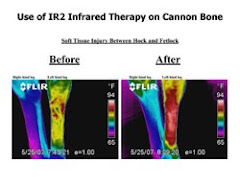During the summer season, because many horses have access to green grass, they are
going to gain weight, but how fat can a horse get before it becomes unhealthy? This is
an age old question amongst horse enthusiasts. Some horses are “easy keepers,” while
others can eat all day and not increase their weight.
Professional trainers and breeders must be highly aware of this issue, and consequently
they have developed a scoring system that can help any horse lover determine if their
equine friend is a little too plump. The easiest way to determine if a horse is too fat is to feel the middle of the rib cage. If you must press your hand down hard to feel the ribs, then you need to start reducing the amount of feed that you are giving, and or create an exercise regime. Remember to
reduce the feed slowly so that your horse’s digestive system can adapt. If, however, you can easily feel the ribs, but not see them, then your horse is carrying the correct amount of weight. Keep in mind that some horses can get fat even while being fed just grass hay, and others will only gain weight when their diet is supplemented with grain. Digestion and metabolic rates factor into these conditions. Vitamins and minerals are also another important component in keeping your horse’s digestive system running optimally. The types of minerals that can be depleted from the soil are dependent on where you live and where your hay is grown. Talk to your feed dealer and or your veterinarian to find out what minerals might be lacking from your horse’s diet, and check with your veterinarian if you are considering adding a vitamin and mineral supplement. If you are going to turn your horse out on pasture, be sure to keep in mind that early spring and winter grasses contain carbohydrates that escalate the levels of starches and carbohydrates in the horse’s system. In other words, they act like grain, and just like grain, must be introduced slowly in order to avoid problems like founder.
Getting your horse out on trail rides or doing work in an arena will also pay off by
helping them to maintain a better body weight and muscle condition. Wet down a saddle
blanket to keep them cool during the hot summer months, and be sure to wear clothing,
and other sun protection for you.
Keeping yourself conditioned by exercising is equally important for you too. Power
Yoga, Pilates, Running, Biking, Hiking and Weight Training are just a few ways in which
you can keep fit and flexible. If you live near the ocean, consider taking up snorkeling as
it provides both cardio and muscle conditioning that your body will need to ride and be
your best in the saddle.
Saturday, June 15, 2013
Saturday, June 1, 2013
How Infrared Can Heal Stifle Injuries
One of the worst injuries that a horse owner can face is a
stifle injury. Sometimes these physical
problems occur because of an accident, for example when a horse becomes
cast. Other times they happen because
the horse is involved in a strenuous sporting event. None the less, the amount of time it takes
for recovery and the many hours spent tending to the injury can be
overwhelming.
|
The joint that makes up the stifle is multifaceted and
large. It works in a similar way as
the human knee. The femoral-tibal
joint works to interconnect the large bone of the upper leg, the femur, with
the smaller bone or tibia, below. The
femoral-patella joint communicates through the patella, or kneecap, to the
femur, and a thin capsule encases the whole stifle joint. Fluids help to reduce shock absorption and
lubricate the tissues as needed. |
|
Stability is increased with ligaments that help to keep the leg
from bending too far in either direction.
These are called collaterals, and they can be damaged if a horse loses
its footing or falls. An X inside the
joint is created by two crossing ligaments, these are called Cruciate
ligaments, and they attach the femur and tibia. Damage to these is similar to a knee injury
in humans. A large muscle called the
quadricep, attaches the kneecap to the tibia, the lower smaller leg bone.
The menisci are important as they help reduce the amount of wear
on the cartilage surface of the joint.
These can be torn during falls or other injuries.
Because the stifle joint is so complex, it can be difficult for
a veterinarian to evaluate and diagnose.
The tearing of the support ligaments is obviously a fairly easy
diagnosis, but bruising and sprains can be much more difficult to evaluate.
|
|
Infrared Light Therapy has become increasingly popular for healing
joints and sore or injured muscles. Its
non-invasive curative powers leave no side effects behind.
But how does it work?It produces electronic photons which, when applied to the surface of the skin, cause the cells to grab the light energy. This promotes natural healing and encourages the torn muscles to repair themselves by increasing circulation. The increased circulation brings new cells and oxygen to the site of the injury. The Lymphatic system is also stimulated, so that swelling is greatly reduced.
Surgery on the other
hand, is very invasive and often a horses’ body will react adversely to the
intrusion, and pain relieving
pharmaceuticals are not without their side effects.
Infrared Light Therapy is completely non-invasive and because it
increases the circulation to damaged muscles, and stimulates the lymphatic
system, thereby removing damaged cells and excess liquid, it also helps to
alleviate the pain caused by the injury.
So, the next time your horse has a stifle injury
consider using Infrared Light Therapy.
Labels:
femur,
infrared healing,
ligaments,
stifle injury,
tibia,
torn menisci
Subscribe to:
Posts (Atom)




